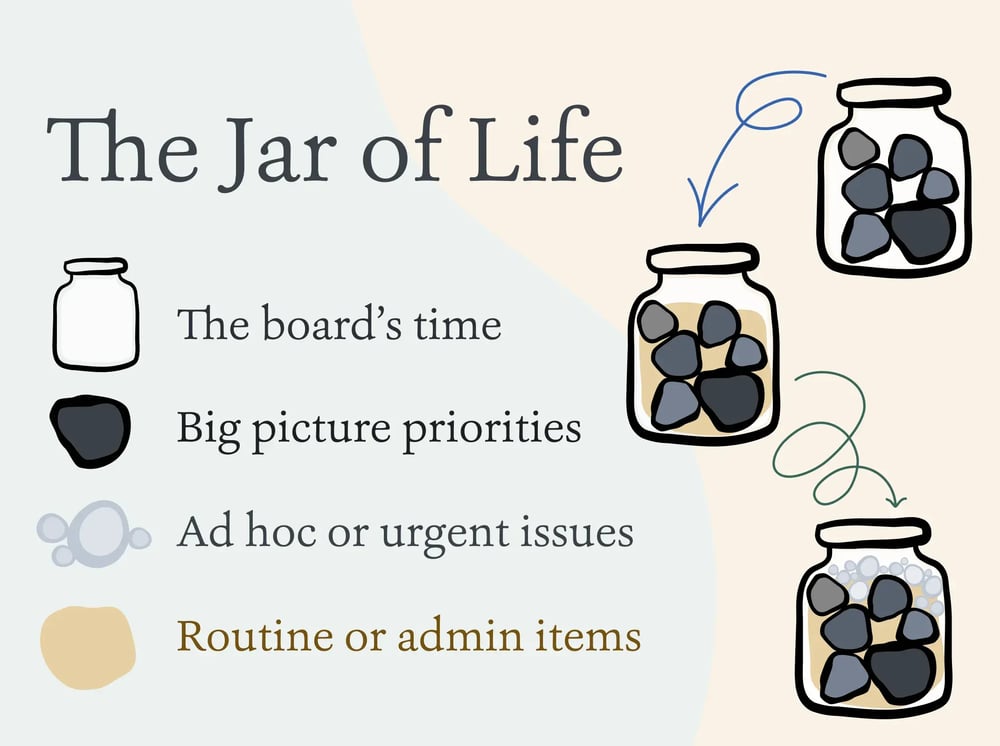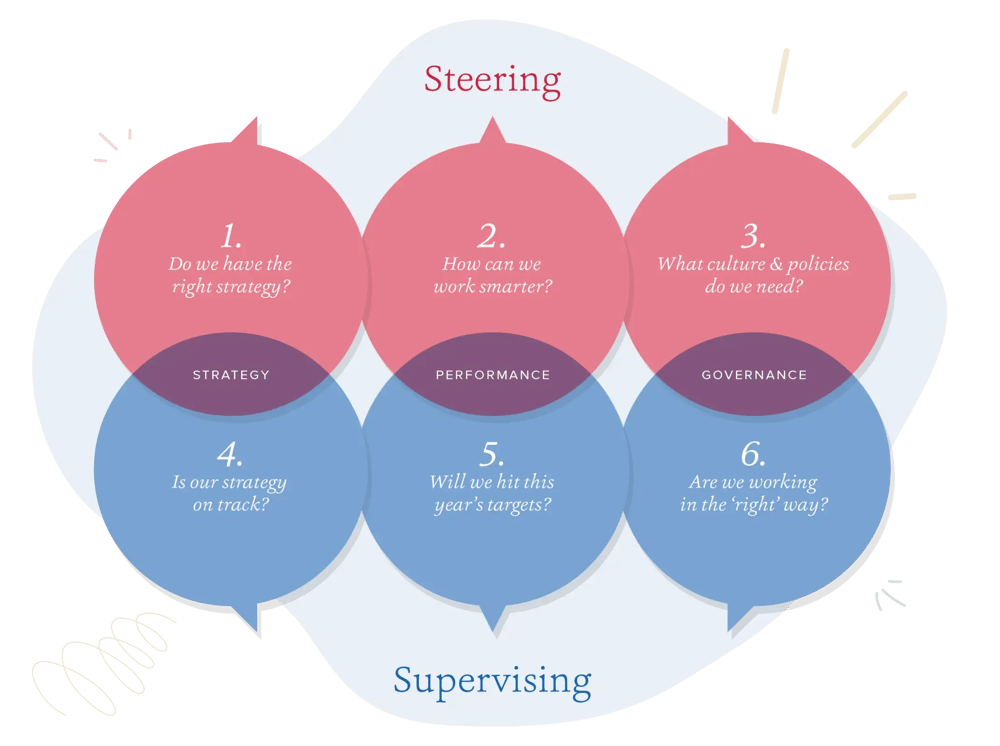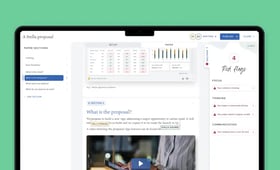In summary
- Ineffective board meetings waste time and money; rebalancing agenda items boosts strategic value.
- Use the “jar of life” framework to ensure that big-picture issues come first.
- Use the Six Conversations model to structure focus across strategy, performance, and governance.
- A well-defined and transparent process, regular check-ins, and digital tools like Board Intelligence’s Agenda Planner will add greater depth and practical value to board agendas.
What is the hidden cost of ineffective meetings?
Inefficient meetings drain time and budget while adding little value; in fact, a 2022 UNC study found that one-third of meetings are actually unnecessary. And organizations pay the price. In large companies, meetings can cost more than $100 million annually, with board meetings generally costing the most.
Our joint research with the Chartered Governance Institute UK & Ireland shows that the average cost of board and committee meetings at large organizations has hovered around £300,000 per year since 2020. Yet few are confident that this investment delivers an appropriate return. Board Intelligence research shows that one-third of boards spend more time looking backwards than forwards.
Why do board meetings need special attention?
Board meetings must focus on strategy, not just routine admin; 91% of leaders say boards must spend less time on operational detail and more on strategy. Boards are critical in steering and risk oversight and cannot afford wasted sessions. So, what can you do to ensure that the board’s time is used wisely, and board meetings deliver the value we expect?
How can you plan effective board meeting agendas?
Cohesive agendas don’t come together magically; we have to design them carefully. By prioritizing the right conversations, boards can dedicate time and focus to the most pertinent issues.
The “jar of life” approach to agenda planning
We suggest taking the “jar of life” approach to agenda planning because board time is limited, like the space inside a glass jar. Fill your imaginary jar with rocks, sand, and pebbles.
- Start with strategic items (“rocks”).
- Then, add routine tasks (“sand”) to fill the gaps.
- Finally, handle ad-hoc items (“pebbles”) without compromising priorities.
How can you structure the board’s time using the “jar of life”?
- The rocks: Your first priorities are big strategic discussions, significant decisions, and scheduled deep dives. Think of these as “rocks” because they are large, chunky, and inflexible.
- The sand: Then, there are the regular, routine, and administrative items like performance updates, compliance matters, and minutes. These are like grains of sand: small, but there are lots of them, and they accumulate quickly.
- The pebbles: Finally, address the ad hoc or urgent items that crop up and are hard to plan for. Think of these as pebbles.

Why should you start with strategic priorities?
If you fill your jar with sand first, there’s no room for rocks (strategic conversation). Placing rocks first ensures that governance focuses on what matters most. Low-priority items can be delegated, reduced, or handled offline to save time.
Building your agenda this way means your board can spend more of its limited time on the topics that matter, with an agenda led by the organization’s priorities, rather than by an administrative “to-do” list.
How do you identify the board’s priority conversations?
Following the proper process is only part of the solution; you must also know your rocks, or priorities. That’s easier said than done, considering boards juggle a vast and expanding workload. This is where the second tool, the “Six Conversations” model, comes in.
What is the “Six Conversations” model?
Board Intelligence’s Six Conversations model divides the board’s focus into strategy, performance, and governance. It aligns with the board’s two core roles of steering and supervising. This helps boards to identify the mission-critical discussions that will help the organization deliver its big-picture vision and goals.

How can boards balance the steering and supervising roles with the Six Conversations model?
Boards often lean too heavily on performance oversight. Only 16% of directors feel over-focused on performance; 44% say strategy gets too little time. The Six Conversations model helps restore balance and ensure that both roles are addressed.
The main areas for reporting and discussion can be looked at in two different ways, reflecting the two roles that boards perform at any given time:
- Steering: The board’s role is to shape the organization and help it achieve its long-term aims.
- Supervising: The board’s role is to monitor performance and seek assurance.
How do you avoid agenda overcrowding with the Six Conversations model?
If you list too many priorities, nothing will get done. This model makes it easy for the board to step back and assess whether it has too many priorities so that it can delegate some to management or committees. It prevents overloaded agendas and poor conversation quality.
How do you implement an agenda strategy?
The first step is to assess where your board has been spending time and identify what needs to change. The second step is a structured process to define a clear mandate and set of priorities for the board; The Six Conversations Model is a helpful framework for this process.
You can also work with an expert team to facilitate an exercise centered on board priorities and agenda planning. This exercise would give you the tools and knowledge to create a focused board calendar that supports flexible meeting agendas. Board Intelligence's advisory team has helped hundreds of clients through this process.
Once the board has a clear set of priorities and a structured approach, the final step is to build an operational process that translates these priorities into action.
Assessing the current state of board discussions
Start by reviewing current agenda content and meeting focus.
Ask:
- Where is too much time being spent?
- What content is missing?
Then, review the patterns to reset your priorities.
Defining a clear board mandate and priorities
Host a structured consultation between the chair, company secretary, executives, and board. Agree upon strategic questions and mandates for the year. Align calendar topics around these agreed priorities.
Translating priorities into actionable agendas
Turn priorities into agenda items scheduled with appropriate depth. Be flexible: track changes dynamically and manage your timing. Make sure agendas, committees, and management forums are aligned.
Tools to Support Agile and Strategic Agenda Planning
Most boards plan their agendas well in advance, but we all know that things change. Keeping on top of all the moving parts in spreadsheets and other documents can keep governance professionals awake at night.
Benefits of the Board Intelligence Agenda Planner Tool
Board Intelligence’s Agenda Planner tool is designed to take the complexity out of setting forward agendas. From a single view, you can plan your forward calendar and manage last-minute changes with a simple “drag and drop” feature. You can also track where your board spends its time and proactively course correct.
Make every board meeting count
Strategic board agendas don’t happen by chance. They require intention, structure, and tools. Start with the “jar of life”, then define the board’s priorities through the Six Conversations model, then execute via a clear process. The right digital tools can turn this work into a flexible, governance-centered practice.

Work with Board Intelligence’s team of board effectiveness experts to set your board up to succeed.
Find out moreFAQs
-
What is the best way to structure a board meeting agenda?
Use a combination of the “jar of life” structure that begins with strategic priorities, then routine matters, and slots in important ad-hoc issues last.
-
How often should a board revisit its priorities?
Boards should revisit their priorities early each year and adjust their agendas mid-year as circumstances change.
-
What are “rocks, pebbles, and sand” in board planning?
They are metaphors:
- Rocks = strategic discussions.
- Sand = routine items.
- Pebbles = important ad-hoc matters.
-
How can the Six Conversations model improve board effectiveness?
The Six Conversations model promotes balanced focus across strategy, performance, and governance, aligning with the board’s steering and supervising roles.
-
What tools help streamline board agenda planning?
Tools like the Agenda Planner from Board Intelligence provide drag-and-drop scheduling, time analytics, and integrated planning.
Can't find what you're looking for? Our friendly team are on hand to help.
Talk to our team


